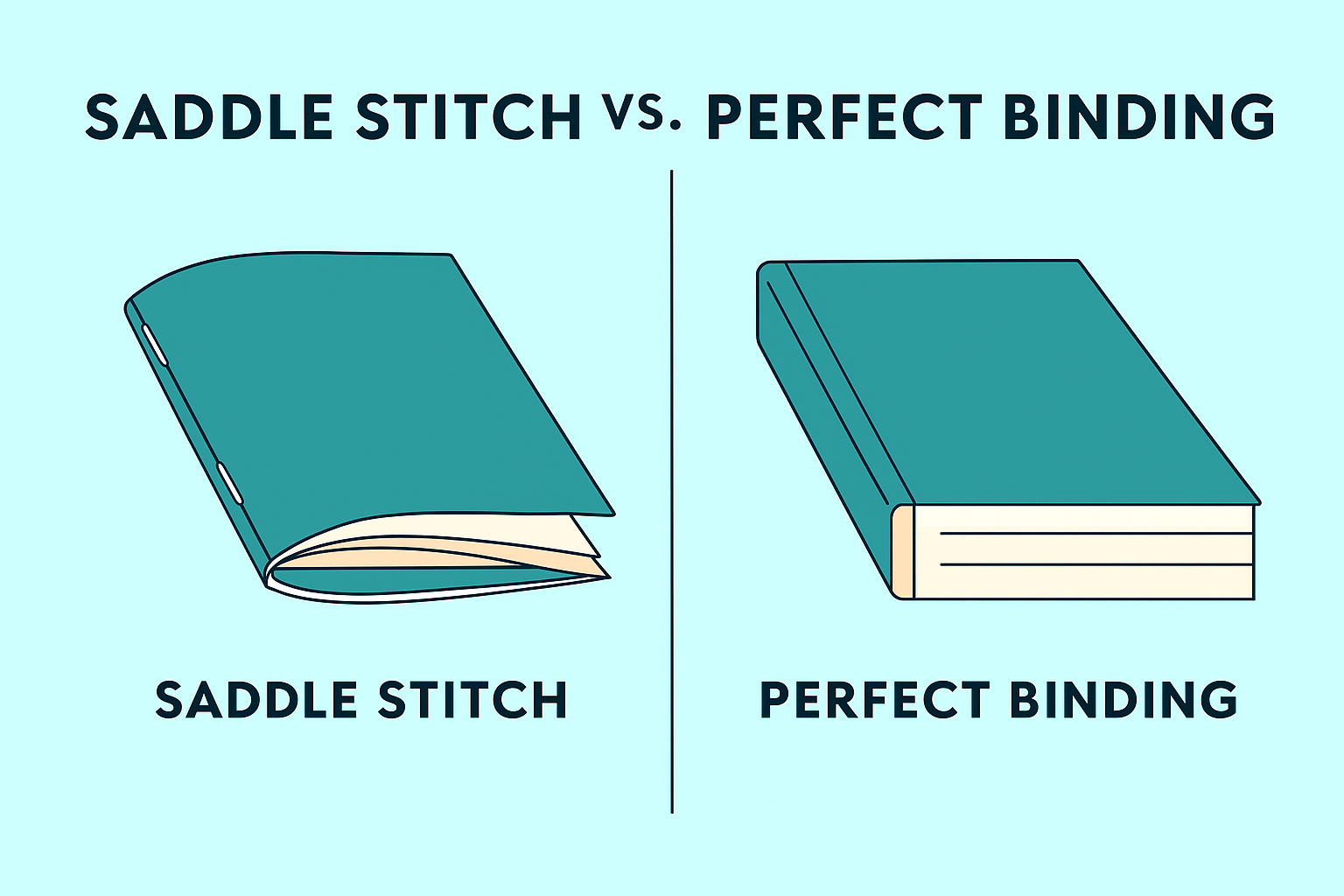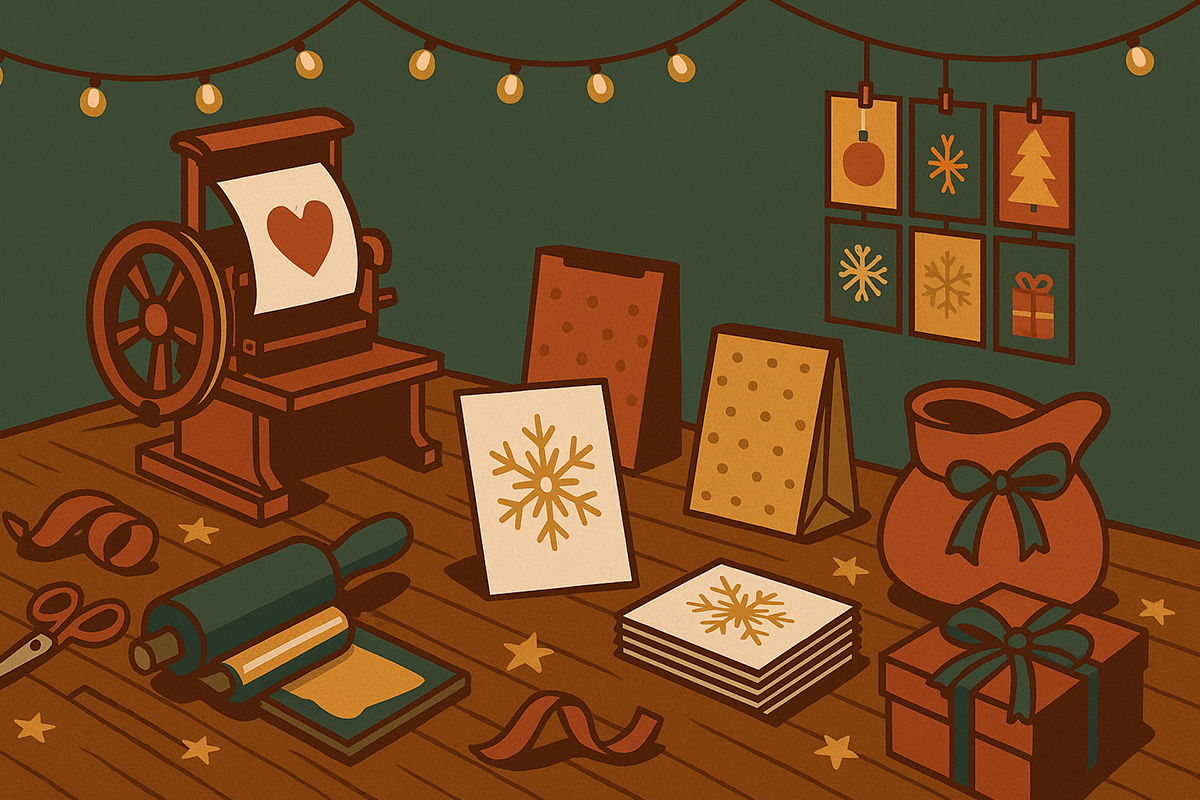What is Perfect Binding for Books?
Understand what perfect binding is, what materials are used in book binding, and how to repair softcover books with PVA glue or other tools.

If you’ve ever seen a soft cover book with a flat spine, then you’ve almost certainly seen perfect binding in action. It’s an affordable and efficient method for binding medium to large volumes, and comes with the perk of extra design space along its flat bound edge.
In this blog, we’ll discuss the professional printing process for perfect bound books, the materials used in their construction, and compare this popular binding with one of its top competitors, the saddle stitch binding.
What is Perfect Binding?
Perfect binding exploded in popularity in the 20th century with the emergence of paperback books. It was a faster, more affordable way to create books with a flexible spine and cover. The general process involves seven steps:
- The pages are printed consecutively, four to a sheet
- Each sheet is folded in half
- The folded sheets are stacked in order
- The folded edges are sliced off
- An adhesive is applied to the cut edges
- The pages are pressed into the interior of the cover’s spine
- The free edges are trimmed to create a professional final book
What Materials Do You Need for Book Binding?
Professional print shops use a variety of paper weights and finishes to print perfect bound books. Typically, interior sheets are lighter weight than the exterior cover. Special finishes, like metallic foil or gloss, can be used to highlight details on any part of the book, but are particularly popular for eye-catching cover treatments.
Depending on the types of papers chosen, professional printers may also recommend different types of adhesives. EVA (ethylene vinyl acetate) hot melt (hot glue) is typically the least expensive option, and works well with matte or rougher textured papers. However, for some synthetic materials and coated stocks, or for books that will be exposed to more extreme environmental conditions, PUR (polyurethane reactive) adhesive may offer better adhesion over time.
How to Fix Perfect Book Binding
If you’re trying to keep old perfect bound books going, but pages are coming loose from the spine, it may be possible to execute a DIY repair. The process involves realigning the pages and securing them together, carefully separating the spine and cover from the pages, and applying a thin coat of PVA glue to re-establish the bond between the two comnponents. However, this fresh bond is unlikely to be anywhere near as secure or long-lasting as the original, professionally applied adhesive.
If you’re dealing with large-scale deterioration across multiple copies, then reprinting is likely to save you time and resources in the long run. Replacing worn-out, much-used volumes like employee handbooks, instructional manuals, and directories ensures they remain reliable sources of truth for your organization. Reprinting also provides an excellent opportunity to modernize older prints, updating and refreshing their content to reflect brand changes, procedural updates, and more.
Perfect Binding vs. Saddle Stitch

Finally, let's compare perfect binding with its most popular alternative, saddle stitch binding. While both are effective at creating durable, professional-quality resources, they’re best suited to different types of publications.
Perfect binding is ideal for medium to large volumes, ranging from 40 pages to 500+. Saddle stitch (or staple binding), on the other hand, is restricted to small volumes, between 8 and 64 pages. Perfect binding is also the preferred option when a flat spine is desired, providing space for a title, organization name, and/or volume number. Saddle stitch booklets have a pointed spine as a result of their construction, which can’t be printed on.
Conclusion
If you’re not sure which binding style is right for your publication, good news! At Wallace Carlson, we’ve been printing volumes of all types and sizes, for all kinds of clients, for nearly a century. It would be our pleasure to work with you, assess your particular needs, and help you find the right printing solutions for your content. It’s all part of our commitment to providing Michelin star-quality service to every single person who reaches out. Contact our team today to learn more!
Work that stands out across time and industries
Looking for more insights on print marketing and design? Check out the latest blogs from Wallace Carlson for expert tips, industry trends, and strategies to elevate your brand.



